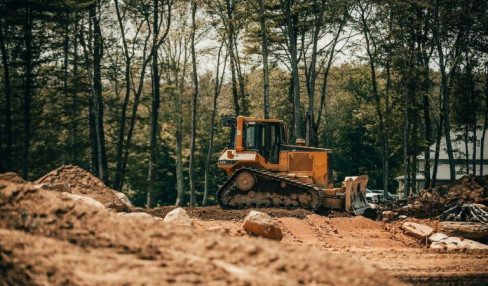The Different Types Of Real Estate In Brentwood
5 Mins Read
Published on: 03 August 2022
Last Updated on: 09 November 2024

What are the different types of real estate? Residential consists of dwellings for individuals, families, and groups of people.
These include single-family homes, condominiums, and townhouses. Commercial consists of land used by businesses for their operations.
These properties include office buildings, parking lots, medical centers, and hotels. Industrial real estate includes manufacturing, logistics, and research and development.
And, of course, there is still more to it than meets the eye as you will read on in the following article dealing with the several types you’ll find in and around Brentwood.
Types Of Real Estate In Brentwood
1. Residential and Commercial
The distinction between residential and commercial real estate has a number of advantages. Residential real estate includes the typical detached house and other properties that are designed for a single family’s use.
Commercial real estate, on the other hand, encompasses buildings that are intended for business activities. There are many ways to get involved in residential real estate, including buying, selling, renting, renovating, financing, and development.
Brokers, developers, banks, and trusts are typically involved in the transaction, working with landlords and property owners to make sure the transaction goes smoothly.

While both types of it can be lucrative for investors, there are certain advantages to investing in residential instead of commercial property. Commercial real estate has higher rental income streams and allows investors to pass along property tax costs to their tenants.
Commercial properties also tend to be larger and more expensive. In addition, banks are more willing to lend to commercial properties with lower Loan-to-Value ratios.
While residential properties are typically held by real estate agents or companies like KristaHomes.com, the latter type may also be owned by companies that act as landlords. Purchasing commercial real estate requires more capital than investing in residential properties.
A new entrant in the residential real estate market is digital realtors or companies that make instant offers on homes.
Institutional investors are also increasingly buying residential real estate, as opposed to the commercial variety. The rise of these types of realtors has helped this sector become an attractive asset class for many institutional investors.
2. Trust Deed
Investing in trust deeds in real estate is a relatively new concept. Unlike other forms of investing, trust deeds are secured by tangible property (Deed of Trusts – Cornell Law). However, it is different than investing in stock, since stock investors do not have access to the assets of the company.
Also, unlike a mortgage, there are certain laws that make it easier for the trustee to sell the property if the situation warrants it.
A trust deed protects the investment interest of a party and holds title to the property until it is paid off. During this time, the borrower is still the “equity” owner of the property and is able to reap the equity and other benefits associated with homeownership.

Another beneficiary is the person who is protected from losing the property in case of default. This party is usually a lender, but it can also be a private individual who signed a contract with the borrower. A trust deed is a great way to avoid foreclosure and speed up the process.
Instead of going to court, the beneficiary does not have to wait for a long time. Foreclosure is a legal process and must be followed by both state statutes and a contract that binds both parties.
A trust deed gives the trustee the authority to auction the property. The trustee then becomes the owner of the property but shares the title with the trustor
3. Abandonment
In a recent report, the Lincoln Institute convened an expert roundtable to discuss the challenges and remedies associated with property abandonment. The panel discussed a range of issues related to property ownership, title problems, and potential policy interventions. The article also explores the next steps.
Abandonment in real estate affects a wide range of real estate assets, including vacant properties. In this report, we will examine the causes of property abandonment, how to mitigate these challenges, and what to do if the property owner is unwilling to sell.
An abandonment in real estate differs from a surrender, in which one party can withdraw from a contract before the expiration date without forfeiting any rights to the asset.

A corporate owner may also withdraw from a contract if it becomes unprofitable, despite the fact that the forfeiting party has no intention of doing so. In addition, a corporation may choose not to exercise an option after finding it unprofitable to sell the asset, allowing the contract to lapse.
In addition to a property’s location, it’s crucial to know who the true owner is. Abandonment occurs when a property’s original owner doesn’t want to sell it or decides it is too much trouble to deal with.
In many cases, the property owner will simply move away. The best way to track down this person is to look for the property’s address in county property tax records.
4. Abandonment Rate
A study of the Abandonment Rate of real property has uncovered various factors that influence the abandonment rate.
Depending on the property type, these factors could include lack of cash flow, multiple liens, and fraudulent transactions. The abandonment rate is also influenced by the number of liens that exceed the market value of the property.

For example, many liens may be held by a mortgage lender, making it difficult for the new owner to obtain title to the property or site.
The problem of abandoned property is even more prominent in smaller cities, which have lost more than 25 percent of their populations according to this link in the past few decades. This suggests a severely weakened market.
Many socioeconomic factors may have contributed to the massive abandonment. The lack of activity could also indicate systemic problems that limit the market’s ability to stimulate and this is because the physical structures were categorized as abandoned if they were in foreclosure.
Any study worth its spit uses aggregate methodology and its data from the 1970s to find out why certain neighborhoods have a high abandonment rate.
Additionals:



















Comments Are Closed For This Article